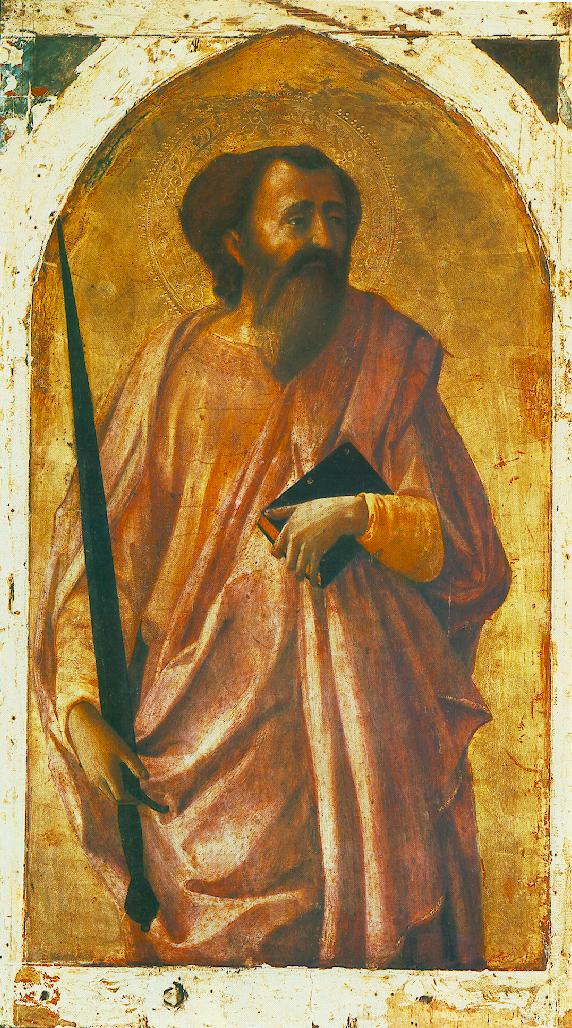Facts About St. Paul
The Pisa Altarpiece was a significant multi-panel artwork created by Masaccio for the chapel of Saint Julian in the church of Santa Maria del Carmine in Pisa. Commissioned by the notary Giuliano di Colino in 1426, the altarpiece originally comprised at least five compartments with ten principal panels. Today, only four of these panels are known to have survived.
The central piece, "Madonna and Child with Angels" was a collaborative effort involving Masaccio, his brother Giovanni, and Andrea di Giusto. Regrettably, the altarpiece was disassembled and scattered in the 18th century. However, a reconstruction was attempted using a detailed description provided by Vasari in 1568. As of 2010, eleven panels from the altarpiece have been identified and are now housed in various museums. These panels include depictions of the Crucifixion, saints such as Paul and Andrew, "Madonna and Child with Angels" and scenes from the predella.
Masaccio's work on the altarpiece demonstrated a unique blend of traditional medieval elements with a more realistic style. Although the "Madonna and Child" panel is damaged, it still showcases intricate details such as the portrayal of Christ as a child, the use of linear perspective, and the symbolic representation of the Last Supper through grapes. The altarpiece also featured flanking saints and predella panels depicting scenes like the Adoration of the Magi and the legends of St. Julian and St. Nicholas.

 France
France